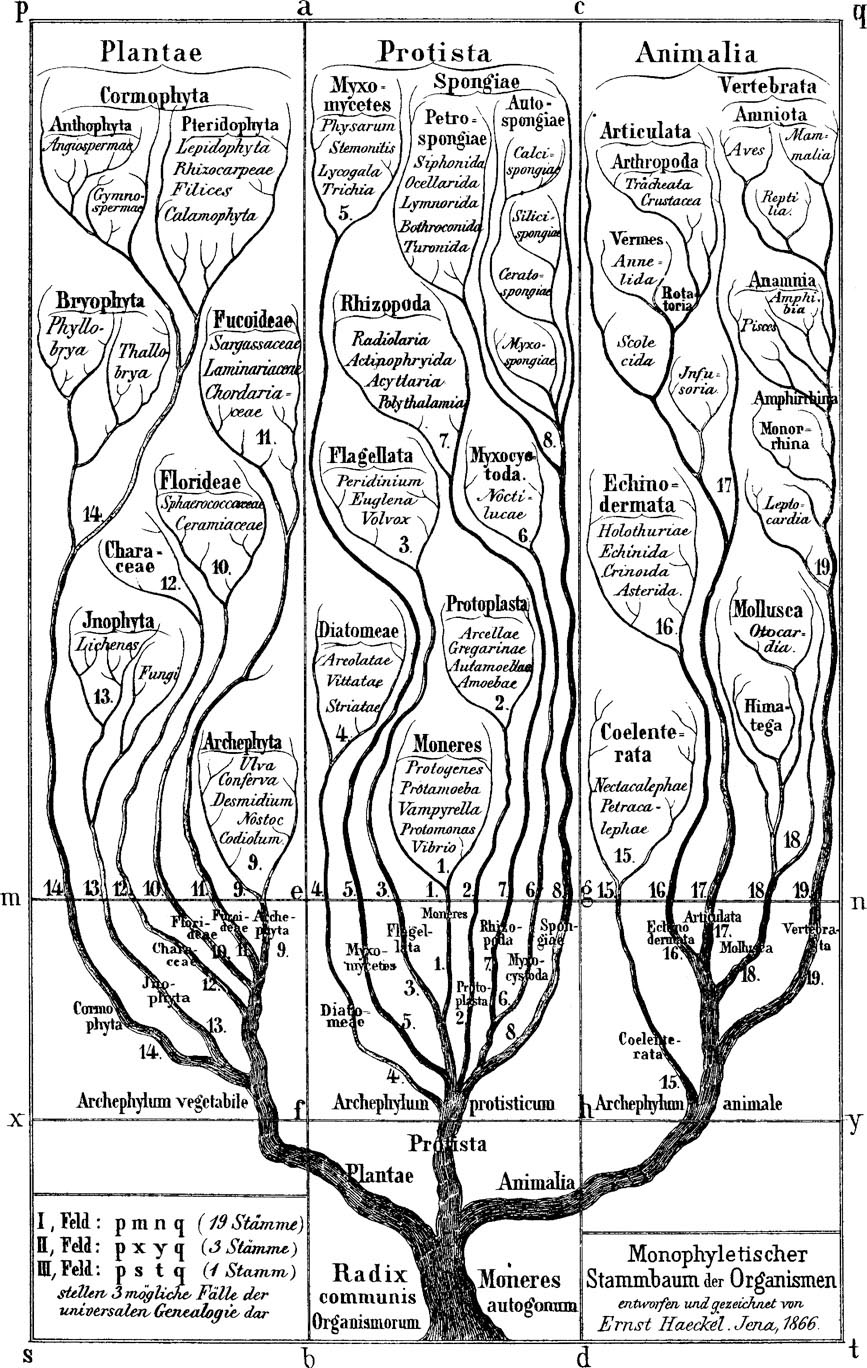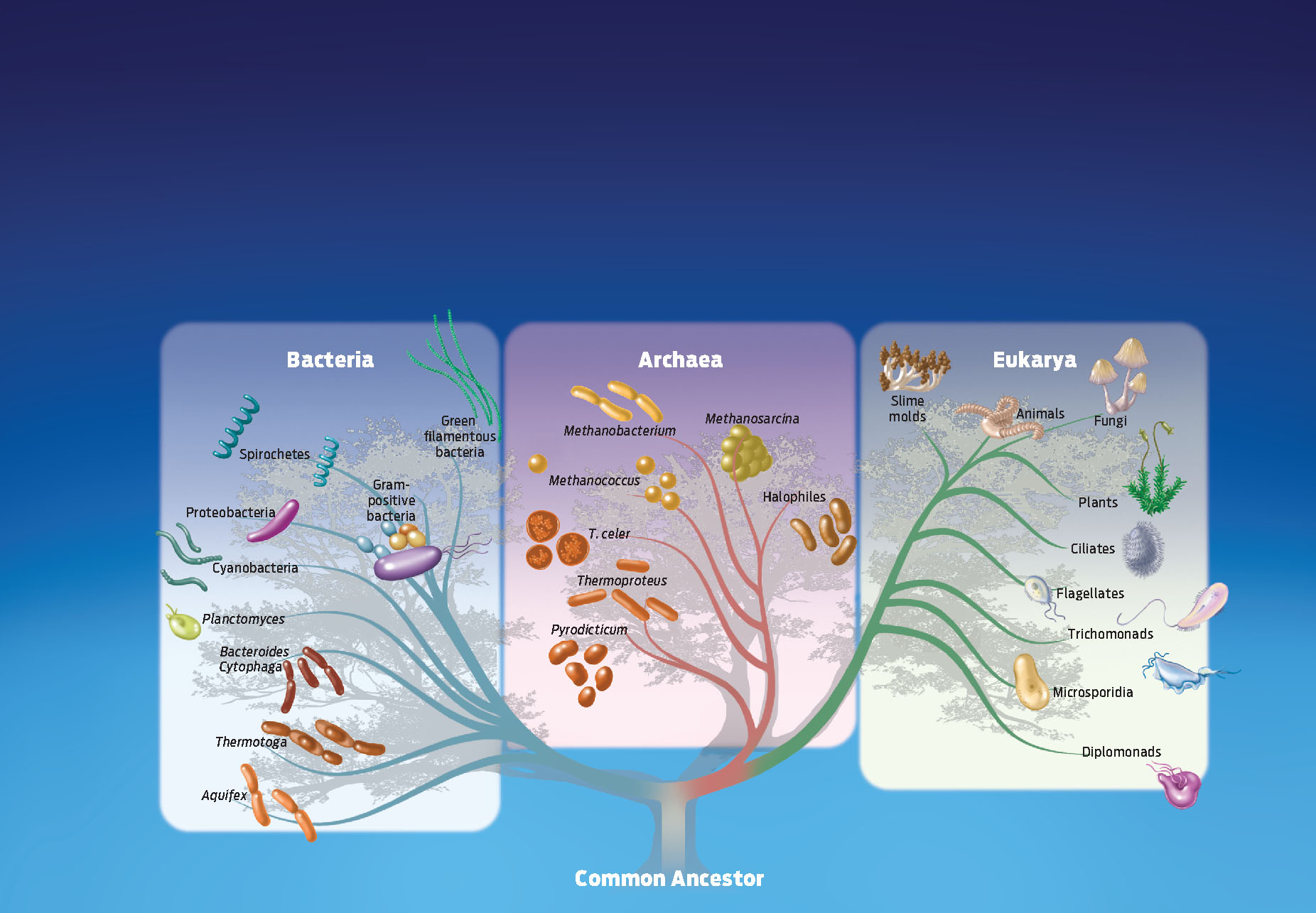CLASSIFICATION AND PHYLOGEN
 How many branches does the tree of life have?
How many branches does the tree of life have?
ANSWER: Since each living species sits on its own branch of a phylogenetic tree, the complete tree of life has as many branches as there are species in the world. Today’s species are like thin twigs in the upper branches of an enormous oak tree. Closer to the bottom of the tree, nearer to the ancient trunk, however, we find significant forks. Just how many forks there are at the bottom of the tree is a question that has been debated for decades.
Before the 18th century, biologists divided living things into just two main categories: animals and plants. This classification was based on whether an organism moved around and ate or did not move around and eat. By the mid-19th century, the microscope had revealed a whole new world of organisms, and so a third branch was added to life’s tree. The German biologist and artist Ernst Haeckel, in 1866, was the first to draw a phylogenetic tree that included these microscopic organisms, which he termed Protista, or protists.

By the 1960s, taxonomists realized that even three branches did not fully capture the diversity of life; many organisms—such as fungi—didn’t fit neatly into any of these groups, and so another classification scheme was proposed. This one grouped all living organisms into five large kingdoms on the basis of how they obtained their food (by eating, photo-synthesizing, or decomposing) and whether they had eukaryotic or prokaryotic cells. The five kingdoms were Animalia, Plantae, Fungi, Protista, and Monera. Protista included mostly single-cell eukaryotic organisms (such as the amoeba), and Monera included all prokaryotic organisms (such as bacteria).
DOMAIN The highest category in the modern system of classification; there are three domains—Bacteria, Archaea, and Eukarya.
386
Yet even this revised classification scheme eventually had to be overhauled as more information became available. In the 1970s, genetic studies by Carl Woese revealed that, on the basis of genetic relatedness, not all prokaryotes could be lumped together; likewise, protists were too genetically diverse to be put in one category. Consequently, scientists now group organisms into one of three large domains—Bacteria, Archaea, and Eukarya—which represent three fundamental branch points in the trunk of the evolutionary tree. The original kingdom Monera is now divided into two domains, Archaea and Bacteria. Within the domain Eukarya, Animalia, Plantae, and Fungi remain recognized kingdoms, but the protists (members of the former kingdom Protista) are dispersed across the eukaryotic domain of life on the basis of genetic evidence (INFOGRAPHIC 17.8) .
All living organisms have evolved from a common ancestor. On the basis of genetic evidence, we can group living things into one of three domains of life, each with a distinct evolutionary history. While the Bacteria and Archaea both have prokaryotic cells, they have distinct evolutionary histories, with Archaea being genetically more closely related to Eukarya than to Bacteria. The domain Eukarya encompasses protists, plants, fungi, and animals, including humans (see Chapter 19).

387